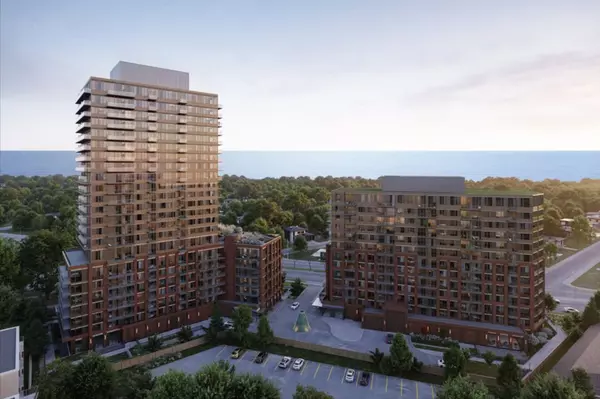Efficient Tenant Service Request Management: Documentation and Response Best Practices
Toronto’s updated property standards bylaws place significant responsibility on landlords and property owners to provide prompt, effective responses to tenant maintenance issues, particularly those related to essential services like heat and air conditioning.
As of 2025, all rental units in Toronto must meet specific climate control requirements: heating systems must maintain an indoor temperature of at least 21°C from October 1 to May 15, regardless of the outdoor temperature. This applies even during transitional weather in early fall and late spring, and landlords are prohibited from turning off the heat during this period based on their own assessments of outside conditions. For units equipped with air conditioning, landlords must ensure systems are operational and capable of maintaining a safe indoor environment between June 1 and September 30, especially during heat events that pose health risks.
In addition to meeting these minimum climate control standards, landlords are legally required to respond to urgent service requests, such as loss of heat, air conditioning, or electricity, within 24 hours. Non-urgent repairs, including issues like minor leaks or damaged fixtures, must be addressed within seven days.
Failing to comply with these timelines may lead to enforcement actions by Municipal Licensing and Standards (MLS), including inspection orders, fines, and possible prosecution. To avoid this, landlords must adopt a structured, well-documented process for receiving, responding to, and resolving tenant service requests.
Step 1: Implement a Written Request System
Verbal requests often create ambiguity and lead to disputes. Landlords should formalize the process by requiring all non-emergency service requests to be submitted in writing. Acceptable formats include:
- Online forms embedded in a tenant portal
- Emails sent to a designated maintenance address
- Paper forms with timestamps for small buildings or non-digitized portfolios
Each request should include the following:
- Tenant name and unit number
- Date and time of submission
- Description of the issue, including when it began
- Any previous repairs related to the issue
- Access permissions and availability for repair visits
For emergency repairs, including total heat or AC failures, major water leaks, or security risks, a 24/7 hotline or app-based reporting tool should be available to tenants, with clear instructions posted in each unit and building lobby.
Step 2: Acknowledge and Log All Requests
Immediately upon receipt, a written acknowledgment should be sent to the tenant, confirming the request has been received and is being processed. Log the request into a centralized maintenance tracking system (either a spreadsheet or property management software) and assign a unique ticket number to prevent confusion.
A properly structured log should include:
- Date/time received
- Category: Urgent or Non-Urgent
- Assigned maintenance staff or contractor
- Status updates (e.g., “Scheduled,” “In Progress,” “Completed”)
- Completion date and tenant confirmation, if applicable
This record will prove essential if a dispute arises or the City investigates after a tenant files a 311 complaint.
Step 3: Categorize Requests According to Urgency
Toronto bylaws prioritize essential services. The following are considered urgent and require a response within 24 hours:
- No heat during the heating season
- No air conditioning during the cooling season (where AC is provided)
- No hot or cold running water
- No electricity
- Major leaks, flooding, or severe mould
- Broken locks or compromised security
All other repairs, such as cosmetic damage, appliance issues, or minor plumbing problems, are non-urgent but must still be addressed within seven days of receiving the request.
Proper classification is crucial because of the response times expected. Tenants must be informed of their request’s categorization and the expected repair timeline.
Step 4: Schedule and Document the Repair
For urgent requests, aim to dispatch a technician the same day. If a qualified contractor is unavailable within 24 hours, landlords must document all reasonable attempts to secure one and maintain evidence that the delay was beyond their control. This might include:
- Screenshots of vendor outreach
- Contractor unavailability notices
- Invoices or email threads with repair companies
For non-urgent issues that fit within the seven-day window, provide tenants with a scheduled date and estimated time of service. If delays occur due to parts, tenant inaccessibility, or weather conditions, update the maintenance log and notify the tenant in writing.
Once the repair is complete, note the outcome and obtain tenant confirmation when possible through a digital signature, email reply, or written statement.
Step 5: Maintain a Complete Record of All Activity
Toronto MLS officers may request documentation in the event of an inspection or dispute. Landlords should retain:
- The original tenant request
- All communication related to the issue
- Maintenance logs and work orders
- Invoices or service reports from technicians
- Final confirmation of issue resolution
Keep these records for at least two years, as required under provincial and municipal landlord-tenant law.
Property Management to Ensure Compliant Documentation
Staying compliant with Toronto’s service request response timelines takes time, organization, and reliable access to dependable maintenance contractors, especially when emergencies occur outside regular hours. A good property management company can handle all of the requirements and communications to ensure satisfied tenants and compliance with regulations.
Marco Property Management, for example, uses a centralized app that allows tenants to submit maintenance requests instantly. The platform tracks all activity in real-time, automatically prioritizes urgent issues, and notifies landlords of pending deadlines. Marco’s internal team reviews and categorizes each submission, dispatching repairs within the required timelines.
With a network of licensed contractors available 24/7, Marco ensures heating and cooling failures, as well as other emergencies, are handled quickly and in full compliance with municipal law. Its in-house staff also documents every service interaction, providing clear records in case of audits or tenant complaints.
For Toronto property owners, Marco offers full peace of mind: all communication, tracking, repairs, and record-keeping are handled professionally, allowing them to meet legal obligations while protecting tenant comfort and satisfaction.
Categories
Recent Posts











